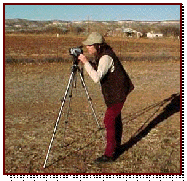
Here we go on the second week. Want to do as much as I can over this three-day weekend, as there are activities at work over the next two weekends. This coming Saturday is the Royalty Pageant, where they choose the royalty who will reign over the coming year. The following Saturday is Exodus/Return Commemoration, where the tribe celebrates their return to the Verde Valley from their internment at San Carlos 1875-1900+/-.
Last semester, creating my “test” shell to show the culture managers what is possible, I really muddled through Moodle. Even though I have worked in three CMS (course management systems) environments (Vista, Desire2Learn, and mostly Blackboard) I struggled with Moodle. The main reason was that Moodle is available for institutions… downloadable for their servers. I just wanted to “use” it. More about that in a moment.
Moodle is an “open source” application, meaning that users have access to the source code. Also that is free. This is important because it is aligned with the academic community’s values of freedom, peer review, and knowledge sharing. It was designed by Martin Dougiamus whose background is in social constructionism. Many DMS systems are tool-centered, not learning centered. Lastly, Moodle is community oriented. There are over 300,000 people registered on Moodle.org and over 30,000 Moodle sites in 195 countries. The global community has translated Moodle into over 70 languages.
Well, as I said, at first I muddled around with Moodle. This time I hope to engage the Moodle community. As a matter of fact, I have a past student using it and expect to tap her knowledge. I also now have two Moodle texts: Using Moodle by Jason Cole and Helen Foster. It is published by O’Reilly, but is also available as a PDF download. The second is Moodle 1.9 for Second Language Teaching.
Back to me… and my Yavapai-Apache Moodle. The first thing I learned was that point about needing a server, etc. Way to bigtime for me. After a day of frustration I discovered Moodlehub.com or Key to School. It is a Moodle hosting site (also free) where you can set up your course. They then become the server for you.
Setup was relatively easy, although I made some mistakes in naming, etc. I set up four basic courses as shown below.

Then set about using some old course material to populate the “Indians of the Southwest” segment. I have a lot to learn yet about setting up the language courses.

There were various settings to make regarding access and passwords. This is the main area I have to work out. I don’t know how people enroll and how I control that. For now I have a Guest Login
Here is what I think you do to visit:
Go to http://yavapai-apachenation.moodlehub.com/
The course is Indians of the Southwest – YAN-HC-101 – Click on it
You will come to a page to enroll in the course -- The enrollment key is: YANonline
At this point you see the actual setup of the Southwest Indians course. It goes by the week and you can show or hide each week. In the weeks activities you place all of your work.
Want to explore additional possibilities? Click the links on the sidebar >>>
http://moodle.org/
http://www.keytoschool.com/
and oh yes, supposed to cite wordle.com for the background of the header.












